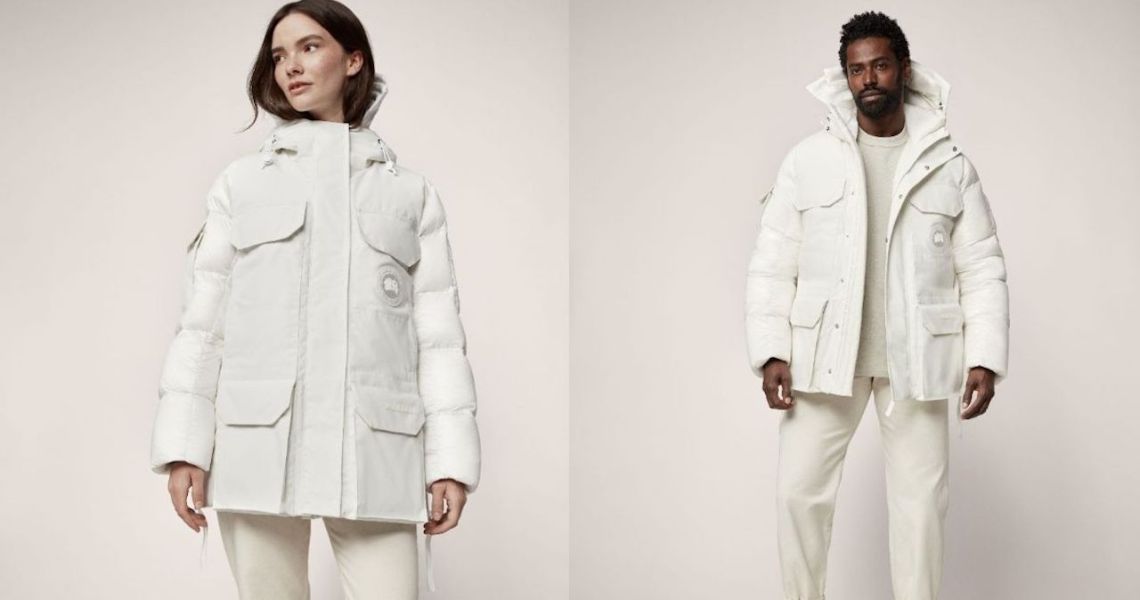On Thursday, Canada Goose launched its 2020 sustainability report, a follow-up to its first annual report in 2019 that made a number of high-profile commitments to sustainable practices. The outerwear brand provided updates on some of its goals from 2019, along with a series of new goals it intends to meet by 2025.
The progress the brand has made — including carbon offsets equal to 200% of the brand’s emissions — shows the benefits of brands making specific public statements about sustainability goals. It also allows the brand to draw lines in the sand and make very clear how the brand’s sustainability efforts will develop. In Canada Goose’s case, the brand is investing heavily in carbon offsetting and recycled materials. However, the company gave no indication that it would halt the use of fur.
Instead, Niamh McManus, design director, and Thompson, said that the company’s main sustainability focus for the rest of the year will be on looking at every product in its inventory and finding ways to replace all materials — including cotton, nylon, polyester and down — with more sustainable alternatives. McManus said the team has been using the term PFMs, meaning preferred fibers and materials.
The first major use of PFMs that the company introduced this year is a new take on its Expedition parka, released in January. The new parka uses recycled nylon, undyed fabric and reclaimed fur bought back from customers to make a product that uses 30% less carbon and 65% less water to create.
“We looked at every product we have and where we could make the most impact,” McManus said. “Things like replacing our Expedition parka [one of the brand’s most popular models] with an entirely new, more sustainable model will catapult us toward our goals.”
The brand’s 2019 goals included beginning a relationship with Bluesign, a company that certifies products that meet a minimum standard of carbon emissions. The brand’s new goal is to have 90% of its products Bluesign certified by 2025. Thompson said the brand has already reached 45% certification. Many brands have come to wait until a sustainability goal is already seeing progress before announcing it, to avoid potential accusations of greenwashing.
Notably, fur will still be in-use going forward, though the company is switching focus to using reclaimed fur rather than newly bought fur. Instead, he said the brand has added options for every product to be bought without fur. And as of early 2021, customers can sell back their removable fur hoods to the brand for a gift card (the amount varying). Thompson said his goal is for the brand to transition entirely to reclaimed fur by 2022.
Ad position: web_incontent_pos1
“We are committed to ending the purchase of new fur,” Thompson said, adding that the brand is “moving rapidly” on the fur initiative and hopes to beat its 2022 goal.
Canada Goose notably trims its hoods with coyote fur, a practice that has been criticized as cruel by groups like the Humane Society International. Many of the biggest names in fashion have gone fur-free, with the latest being Saks at the beginning of April.
Emphasizing sustainability hasn’t impacted the brand’s financials negatively. Its most recent earnings report in February saw online sales surging, especially in China, to a 40% increase. Total revenue was up nearly 5% from the previous quarter, landing at $369 million.




